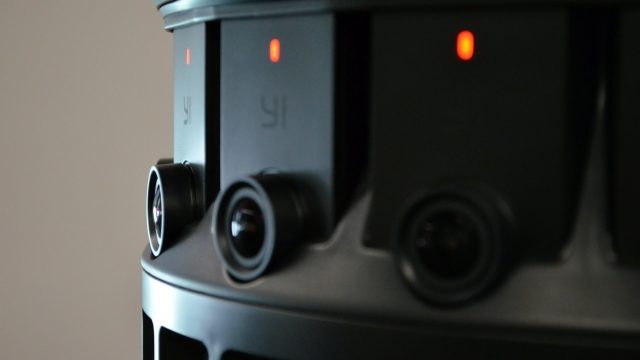Google today announced what the company is calling the “next-generation” of its ‘Jump‘ 3D 360 camera initiative. In partnership with Google, Yi Technology has created the Yi Halo, a 17-camera clock-synchronized array that is designed to be optimized for Google’s automated Jump stitching process which creates impressively seamless 3D 360 output.
Update (4/24/17, 11:34AM PT): Google reached out to correct the price of the Yi Halo camera to $17,000, having initially stated the camera’s price as $18,000. The article below has been corrected.
Original Article (4/24/17): Google announced the Jump initiative back in 2015. Originally it was intended to be an “open” camera design that laid out the ideal camera geometry for the Jump Assembler, Google’s cloud-based automated stitching process. Over time however, the company found that an ideal 3D 360 camera for the Jump Assembler required more than just the right geometry. Having dialed back the open part of Jump, Google is today announcing the first major update to the initiative in some time.
Next-generation Jump Camera
Having worked originally with GoPro to design the ‘Odyssey’ camera for Jump, this time it’s Yi Technology who have worked with Google to create the Yi Halo, which the companies are calling the “next-generation” of Jump cameras. You can see footage captured with the camera here:
The Yi Halo shoots up to 8k x 8k at 30 FPS, or 6k x 6k at 60 FPS, and, thanks to the Jump assembler, outputs 3D 360 video. Based on the Yi 4K Action Camera, and using the Sony IMX377 sensor, the Halo houses 17 individual cameras which the company says are clock-synchronized to “work as one.” That means that when you hit the record button, all the cameras are activated simultaneously, eliminating what’s effectively a rolling-shutter distortion caused by different frame timing between cameras. An inbuilt time-lapse mode can make for some cool long-term captures.
The Halo has its own ad-hoc WiFi network which allows a smartphone to connect and control the camera through an app. The app provides preview & remote control functions, including monitoring and settings & firmware updating which are distributed to the 17 cameras all at once. The Halo also has an on-board touchscreen display which can control all the camera’s functions.
Designed for Reliability and Portability
Derin Turner, Production Director at VR Playhouse, notes “This camera and Jump ranks as one of the best and easiest pieces of equipment and platform to use on the market.”
Continued on Page 2 ‘Seamless Stitching’ >>
Page: 1 2



